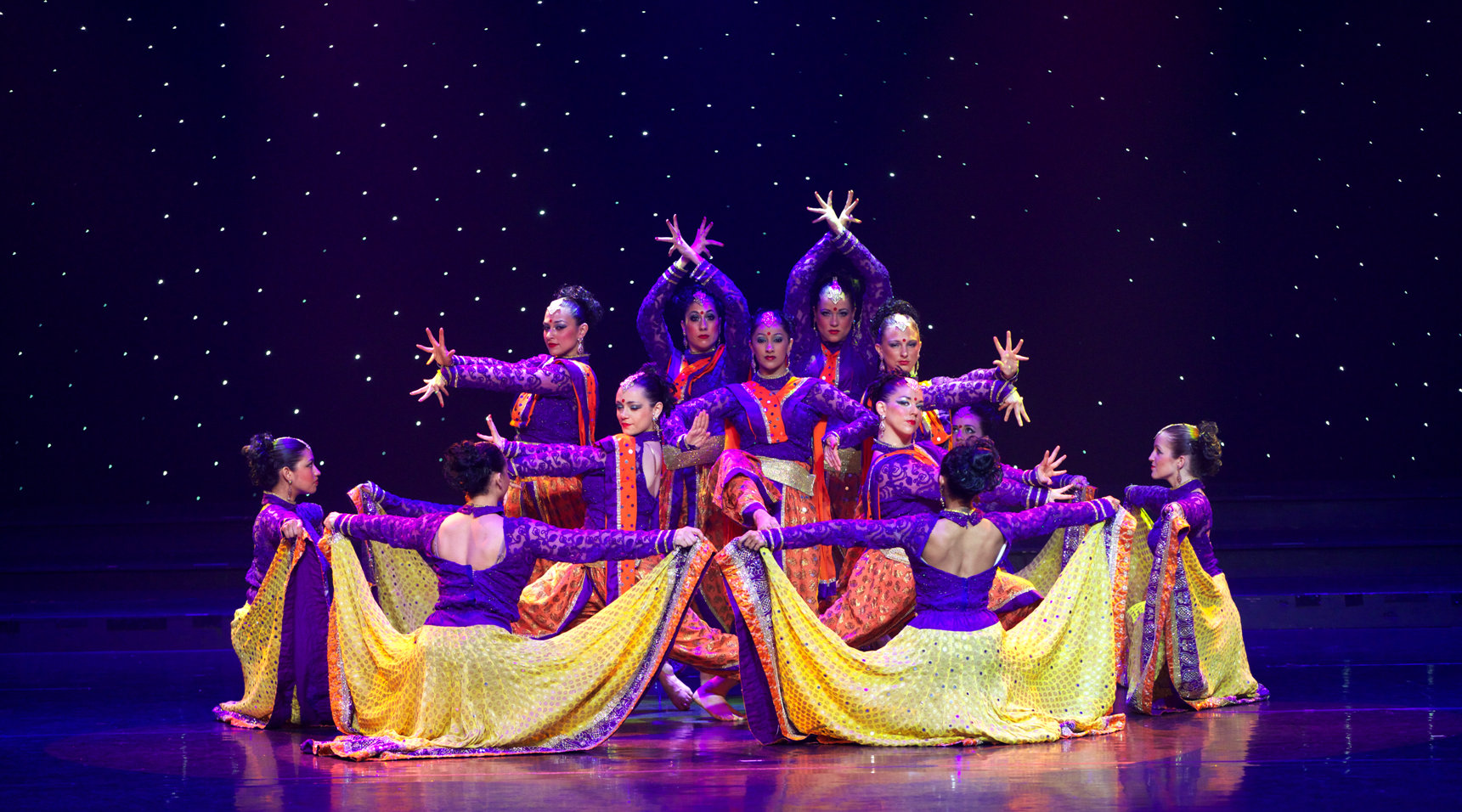After reading rave reviews about the Mystic India World Tour currently in South Africa, my family and I decided to grace the event at Emperors Palace on Friday night. The artists danced the night away to a capacity crowd mainly Indian of course, although I was quite surprised to see many White and African people enjoying the production as well. The producer and brainchild behind the show is Mr. Amit Shah who along with his entire world class team put together a show that enthralled and captivated the audience for the entire duration of the program. The show not only celebrated Indian Cinema's 100th anniversary but it also took the audience down memory lane showcasing Indian folk dances going back many decades in time. The narrator of the show Mr. Sanjay Sahni, who I had an opportunity of interacting with after the show, did an excellent job of taking the audience down memory lane. His voice quality and fantastic command of the English language mesmerized the audience as he related the story of the mythological Elephant God in Hinduism Lord Ganesha, Lord Krishna and Radha's story and the story of the legendary Moghul king, King Akbar who married a Hindu princess Jodha bhai thereby sealing the unity of Hindu and Muslims in India during the 16th century.Every story was accompanied with a beautifully choreographed dance sequence. We were taken to Porbandar, the birth place of Mahatma Gandhi in India.Gandhi arrived in South Africa in the year 1893. It was a fantastic idea on the part of the production team to include the story of Mahatma Gandhi as it unites Indians from South Africa with the native Indians from our motherland, India.The presentation took us through various cities in India where different Indian dance forms originated from. Bharat natyam, which is a very erotic dance form originates from Tamil Nadu, South India. The movements of an authentic Bharatanatyam dancer resemble the movements of a dancing flame. We then celebrated the festival of spring in India commonly known as Holi. The dancers took to the stage with beautiful, brightly coloured outfits and danced happily with enthusiasm and grace thereby making the audience feel as though they are also apart of this colourful festival.I was really impressed with their eye and facial expressions. The Bhangra dance originated from Panjab and watching the dancers do the Bhangra made me want to get off my seat and join them. We then traveled to Uttar Pradesh where the Kathak dance form originated from. According to Wikipedia, a kathak performance is traditionally divided into two distinct formal parts. The technical part is full of intricate rhythmic structures woven around a preordained rhythmic pattern. They include swift and masterly footwork called tatkar and exquisite circular movements or chakkars. Rhythmic units are woven around sort of long patterns called tukras and toras respectively. The other part of kathak employs bhav or abhinaya which elucidates the emotive content of the subject matter.
The highlight of the show though was undoubtedly the acrobatic act performed by Rajesh Mudki, Rajesh Amrale, Ashwin Rawal and Naresh Kashiramjadhav. Their performance was based on an old Indian warrior art of Mallakhamb. According to Wikipedia,originally mallakhamb was introduced as a supporting exercise for wrestlers. "Pole mallakhamb" was started by Balambhattdada Deodhar sometime between 1800 and 1810. Later on, his student Damodarguru Moghe realized that only major grips can be developed with a pole and used cane instead of a pole. Subsequently, the unavailability of cane resulted in rope mallakhamb. Almost 25 to 30 types of mallakhamb apparatus were tried and tested over the years. Up until today this technique is still utilized by the Indian army as part of a soldiers training program.
Prabhu Deva is undoubtedly one of India's best when it comes to dance and choreography and hence a dance show would be incomplete without showcasing his dance style. The dancers did a fantastic job pulling off every Prabhu Deva move effortlessly and flawlessly to the famous song "Muqabala Muqabala". Of course as we moved towards the end of the show, modern day Bollywood song and dance was showcased to an audience that witnessed Indian culture and tradition at its best. Hats off to the 26 member cast that performed with their heart and soul.
The female dancers were Kruti Shah, Hiral Shah, Rupal Joshi, Rachel Higbee, Andrea Palesh, Anjuli Bhattacharyya, Brielle Simonelli, Katerina Lott, Melissa Cammarata, Zimone Mincey, while the male dancers were Jack Tyler, Joseph Barnett, Raphael Niba, Reginald Webber Jr, Donnel Lewis, Bryan Soto, Adam Bourque. I was particularly impressed with the stunning hand made costumes that included traditional Indian clothes from the various regions in India. From what I heard over five hundred costumes were required for the show. The lighting and sound effects was definitely of a high international standard. No Bollywood show can be complete without professional musicians. Rohan Dahale and Manuraj Rajput played the tabla and the flute with absolute finesse and perfection proving to the world yet again that when it comes to music and song compositions India reigns supreme over the rest of the world. The only downside to the show for me was, it was too short.I wanted to see more of Bollywood. The one and a half hours flew by like water. I guess time flies by when you having fun. :)))







No comments:
Post a Comment